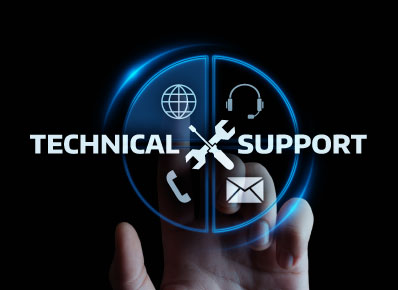In today’s fast-paced, tech-driven world, the pressure to resolve issues quickly in technical support is higher than ever. The common reflex is to rely heavily on logs, expecting them to provide all the answers. However, logs alone often only tell part of the story. With 15 years of experience in technical support and customer interactions, I’ve learned that around 50% of delays in resolving issues stem from incomplete information—either from the customer or the affected devices—not from the lack of logs.
The Real Story: While logs offer valuable technical insights, they often miss the “why” behind a problem. Key contextual information like the sequence of events, user actions, or system changes is typically absent, leading to multiple rounds of back-and-forth communication and unnecessary delays.
The Missing Pieces: Gathering Crucial Customer Information
When customers report an issue, simply collecting logs and technical data is not enough. The resolution often lies in asking the right questions and understanding the customer’s experience:
- What actions were taken before the issue occurred?
Identifying user actions or system changes is critical. - When was the issue first noticed, and under what conditions?
Knowing the timing helps correlate the problem with potential triggers like updates or network changes. - What has been done so far to try and resolve it?
Understanding previous efforts avoids duplicating steps and saves time. - What is the impact?
Assessing business impact helps prioritize issues and focus on solutions that matter most.
Why Asking the Right Questions Matters
Rather than starting with just logs, technical teams should adopt a proactive approach, focusing on key questions that can rapidly narrow down the issue:
- When did the issue first occur, and how often does it happen?
- What actions were performed at the time of the issue?
- What has changed recently—software updates, network configurations, or hardware additions?
By asking these upfront, teams can quickly eliminate irrelevant troubleshooting steps and hone in on the real root cause, saving time for both the customer and the support team.
The Role of Logs: Essential, but Not the Sole Solution
While logs are indispensable for technical insights, they work best when paired with contextual information from the customer. Logs show what happened, but the context provides the “why.” For example, a crash log might reveal an application failure due to an exception, but without knowing that the system was updated right before the crash, troubleshooting could go off course.
Case Studies: Real-World Examples of Effective Troubleshooting
- Network Downtime Misdiagnosis
A customer reported intermittent network outages, with logs pointing toward hardware failures. However, after asking the right questions, we discovered they had recently reconfigured their network, changing routing tables. This information, missing from the logs, helped resolve the issue in hours instead of days. - Software Bug or Configuration Error?
A customer’s logs indicated a software bug, but after further probing, we found they had manually altered configuration files. Without asking about these changes, we would have misdiagnosed the issue, wasting time chasing a non-existent bug.
Faster Resolutions: Combining Logs with Customer Insights
The most effective troubleshooting processes are collaborative. By integrating log data with the customer’s input, technical teams gain a 360-degree view of the issue, which reduces the back-and-forth and accelerates resolution. Here’s a structured approach for technical teams:
Pre-Investigation Checklist
Before diving into the logs, gather essential customer information:
- Detailed description of the issue
- Environment and devices involved
- Recent changes or actions leading up to the problem
Collaborative Log Analysis
Once you have the context, logs can be analyzed more effectively, validating customer claims and pinpointing issues more accurately.
Feedback Loop
After resolving the issue, engage with the customer to confirm the solution worked and identify any additional information that could be useful for future cases. This feedback loop is crucial for refining the troubleshooting process.
Conclusion: The Human Element in Technical Support
To conclude, effective technical support is not just about having the right tools or technical skills—it’s about communication, understanding the bigger picture, and synthesizing logs with real-world context. By asking better questions and closely collaborating with customers, technical support teams can significantly reduce resolution times and improve overall customer satisfaction.
Let’s move beyond relying solely on logs and embrace the power of human insight to drive faster, more accurate troubleshooting.

